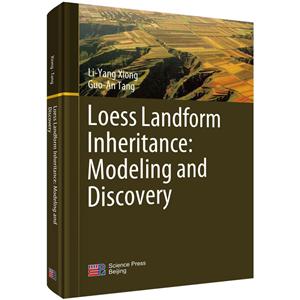-
>
宇宙、量子和人类心灵
-
>
气候文明史
-
>
南极100天
-
>
考研数学专题练1200题
-
>
希格斯:“上帝粒子”的发明与发现
-
>
神农架叠层石:10多亿年前远古海洋微生物建造的大堡礁
-
>
声音简史
黄土地貌传承:建模与发现(英文版) 版权信息
- ISBN:9787030615671
- 条形码:9787030615671 ; 978-7-03-061567-1
- 装帧:暂无
- 册数:暂无
- 重量:暂无
- 所属分类:>>
黄土地貌传承:建模与发现(英文版) 本书特色
黄土地貌继承性研究是揭示黄土地貌二百余万年来发育、演化机理的关键环节,也是黄土地貌研究的重要关注点。前人对黄土地貌继承性及相关问题进行了较多的研究,初步探讨了第三纪古地形对当今黄土地貌形成的控制作用。但是,目前对黄土地貌继承性的成因机理、影响程度及区域差异性等问题尚未形成共识。数字高程模拟(DEM)及基于DEM的数字地形分析,为在GIS平台下实现地表形态的定量描述与分析提供了新的思想和方法。如果能够建立第三纪黄土下伏古地形的数字高程模型,从而构建地表-地下一体化的双层的数字高程模拟,就可望通过运用GIS复合分析等多种空间分析方法,有效揭示黄土地貌继承性研究中的科学问题,实现黄土地貌研究的理论突破与方法创新。研究首先分析了黄土地貌继承性的概念模型。其地形面的DEM、地质图以及钻孔物探资料为依据,重建了三种空间尺度的黄土堆积前原始地形面的DEM,进而构建了地表-地下一体化的“双层地形模型”。并据此模型,通过面积高程积分、坡向变异特征、地形剖面比降及地形剖面凸凹度等方法与指标,分析现今地形与古地形的空间关系,获得在下伏古地形控制作用下,黄土堆积对地表起伏变化、地貌发育变化及黄土地貌空间分异格局的新认识。
黄土地貌传承:建模与发现(英文版) 内容简介
黄土地貌继承性研究是揭示黄土地貌二百余万年来发育、演化机理的关键环节,也是黄土地貌研究的重要关注点。前人对黄土地貌继承性及相关问题进行了较多的研究,初步探讨了第三纪古地形对当今黄土地貌形成的控制作用。但是,目前对黄土地貌继承性的成因机理、影响程度及区域差异性等问题尚未形成共识。数字高程模拟(DEM)及基于DEM的数字地形分析,为在GIS平台下实现地表形态的定量描述与分析提供了新的思想和方法。如果能够建立第三纪黄土下伏古地形的数字高程模型,从而构建地表-地下一体化的双层的数字高程模拟,就可望通过运用GIS复合分析等多种空间分析方法,有效揭示黄土地貌继承性研究中的科学问题,实现黄土地貌研究的理论突破与方法创新。研究首先分析了黄土地貌继承性的概念模型。其地形面的DEM、地质图以及钻孔物探资料为依据,重建了三种空间尺度的黄土堆积前原始地形面的DEM,进而构建了地表-地下一体化的“双层地形模型”。并据此模型,通过面积高程积分、坡向变异特征、地形剖面比降及地形剖面凸凹度等方法与指标,分析现今地形与古地形的空间关系,获得在下伏古地形控制作用下,黄土堆积对地表起伏变化、地貌发育变化及黄土地貌空间分异格局的新认识。
黄土地貌传承:建模与发现(英文版) 目录
-
冰雪世界的远征-中国国家地理
¥14.3¥39.8 -
海陆的起源
¥19.7¥39 -
不可不知的科学(全三册)
¥33¥75 -
罗布泊档案:罗布泊腹地探险之旅揭秘(八品-九品)
¥11.3¥38 -
不良情绪应急处理包--孤独感
¥12.9¥30 -
不良情绪应急处理包--精神内耗
¥12.9¥30
物联网应用开发——基于STM32
¥39.0¥69.0晚安,宝贝
¥26.3¥42.8经典常谈
¥12.8¥20.0聚合物-无机纳米复合材料(第三版)
¥148.5¥198.0安心头陀像刻
¥749.3¥999.0

















